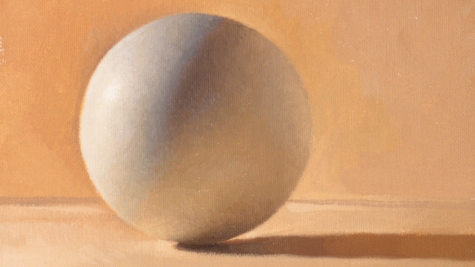Fine Art

One of the most (if not the most) important things for realist painters to understand is light direction. The reason why we need to know about the direction of the light is that it determines the distribution of the values (light and dark) associated with the things (forms) we paint. For instance, we cannot paint a sphere, and make it look like a real sphere, if we apply the values without regard for the way the light shows it to us. We have to apply them according to the logic of the light. We have to understand the way light works. Central to this understanding is the principle of directionality.
Light always comes from a source. It’s not just hanging around like the air. It’s more like wind, having a direction of movement, coming from an origin, and heading away from that origin. This means that light illuminates one side of an object, the side facing the light, and passes by the other side, leaving it in shadow. Furthermore, in the light (i.e. the illuminated portion of the form), various parts of the surface face the light source more or less directly, resulting in variation of value. The form lightens up and darkens down in the light, according to the degree to which it faces the light. In the shadow, reflected light does the same thing. Thus, both in the light and in the shadow there is continuous tonal change, with the distribution of these tonal changes being entirely dependent on the direction of the light.
Visit www.theryderstudio.com for more information on art classes.